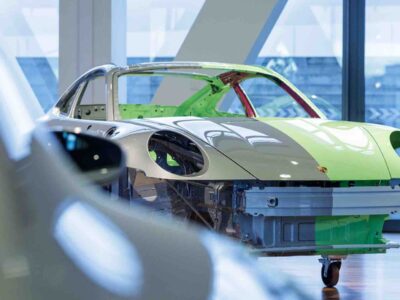Volvo is readying itself for an electric revolution. While the other automakers have chosen to electrify their lineup with plenty of bells and whistles, not to mention hype and buzz, this classic automaker has increased its electric vehicle arsenal without all the pomp and circumstance.
The engineers at Volvo have joined in a partnership with Swedish battery company, Northvolt, to improve the energy density of their batteries so they can extend ranges beyond 600 miles. The partnership will produce all of its batteries using 100 percent renewable energy. Implementing these new technologies is still a few years away, but the release of their first EV, the Volvo XC40 Recharge, is evidence that their EV technology is well on its way.
The XC40 Recharge – Our first pure electric SUV
Volvo has always been a champion of ultra-safe cars. The XC40 Recharge is packed with driver assistance safety tech, leading the vehicle to an IIHS Top Safety Pick-Plus safety rating. The electric SUV is quick, agile, and athletic.
In many ways, the car is just an extension of the XC40 line; and while the decision to turn a traditional ICE car into a pure EV without any significant changes to its design can appear as though the brand is cutting corners is not the case here. The design language of the XC40 walks the line between ICE and EV design and cleverly accommodates either style. The only way to differentiate between the EV and ICE designs is the subtle grille covering that the Recharge version sports. While its boxy design certainly won’t turn any heads as an EV, the XC40 Recharge’s exterior design represents a stylish, under-the-radar introduction to their electric lineup.
However, the car exhibits some surprising specs underneath the hood. Built on the Volvo CMA platform used in the Polestar 2, the XC40 Recharge boasts a dual-engine AWD powertrain that enjoys deceptively good off-road performance despite its low ground clearance. The powertrain also puts out a surprising amount of power, reaching a maximum output of 402 horsepower and 486 lb-ft of torque that rockets the car from 0-60 in just over four seconds, making it unquestionably faster than its internal combustion counterpart.
The battery range for the vehicle is unfortunately still short, with an EPA estimated 223 miles. The car makes up for it with a regenerative braking system that allows for fully one-pedal braking, a highly sought-after feature in the EV industry. The vehicle has a DC fast charging time that charges from 10% to 80% in about 37 minutes, which is on par with most other EV SUVs.
The XC40 Recharge is loaded with safety features and tech in quintessential Volvo fashion. The host of features includes blind-spot monitoring, steering assist, pedestrian and cyclist detection, lane departure warning and lane-keeping assistance, and active bending LED lights, all of which come standard. In addition, the car has a protective body structure and battery safety cage that protects passengers in collisions and minimizes the damage to the vehicle.
As for the car’s interior, it is styled almost identically to its ICE counterpart. The shapes found in the interior are soft and rounded, giving the interior a pleasant, comfortable feel. The infotainment center is a small touchscreen that shares the space with the other buttons and knobs, rather than dominating it like many other EVs. The layout of the dashboard has a distinctly no-frills approach. The latticework pattern on the doors and above the glove compartment provides texture to the monochromatic interior.
In terms of space, the interior unfortunately lacks leg room. Because the car is a carbon copy of the original XC40, the interior still has the structure of an ICE, which means the low flat floors so often found in EVs are absent here. Fortunately, the trunk space has ample trunk space, with 49 cubic feet of space with the rear seats down and additional space in the front trunk.
The base model of the Volvo XC40 starts at $52,795. However, the XC40 Recharge is just an initial step in the Swedish automaker’s electrification process, as Volvo is positioning itself to become a leader in the electric vehicle industry.





